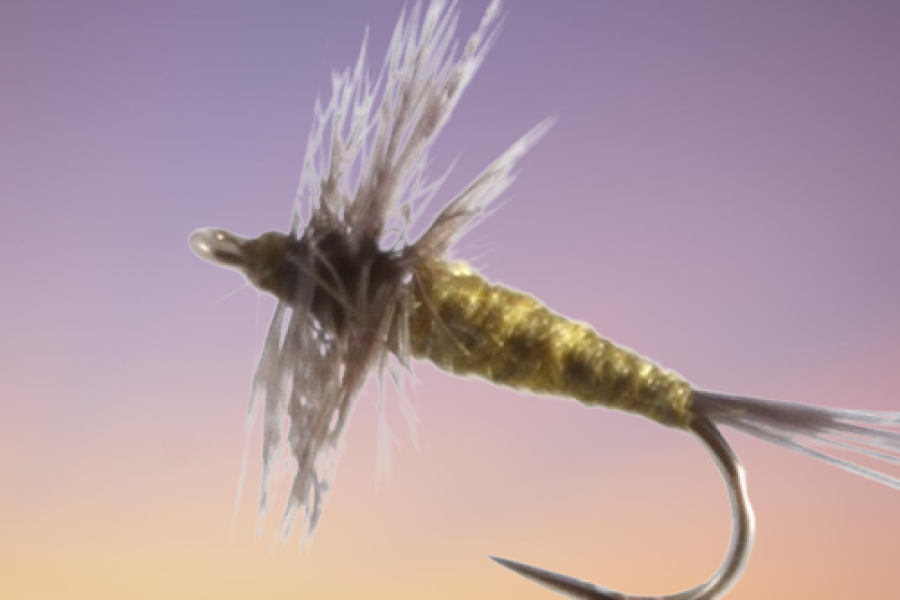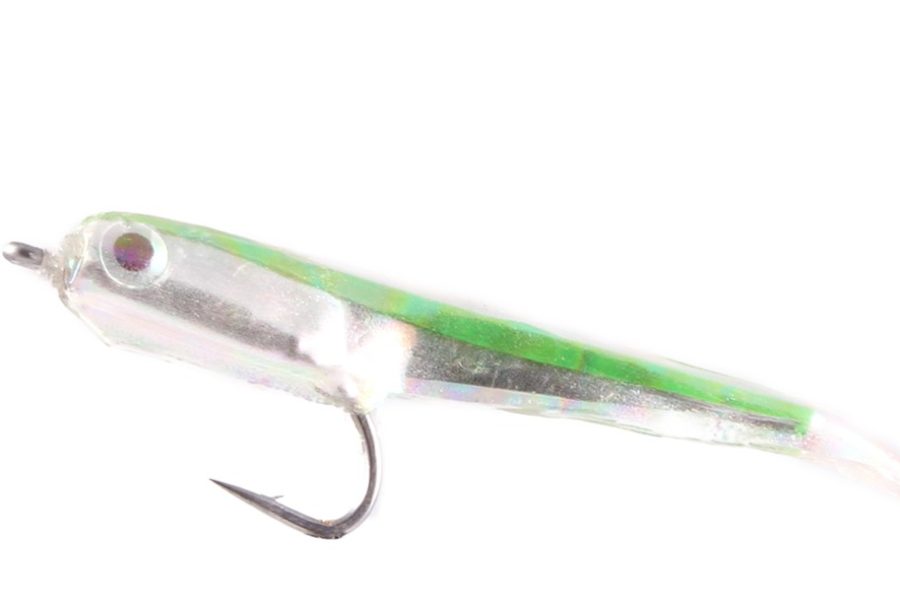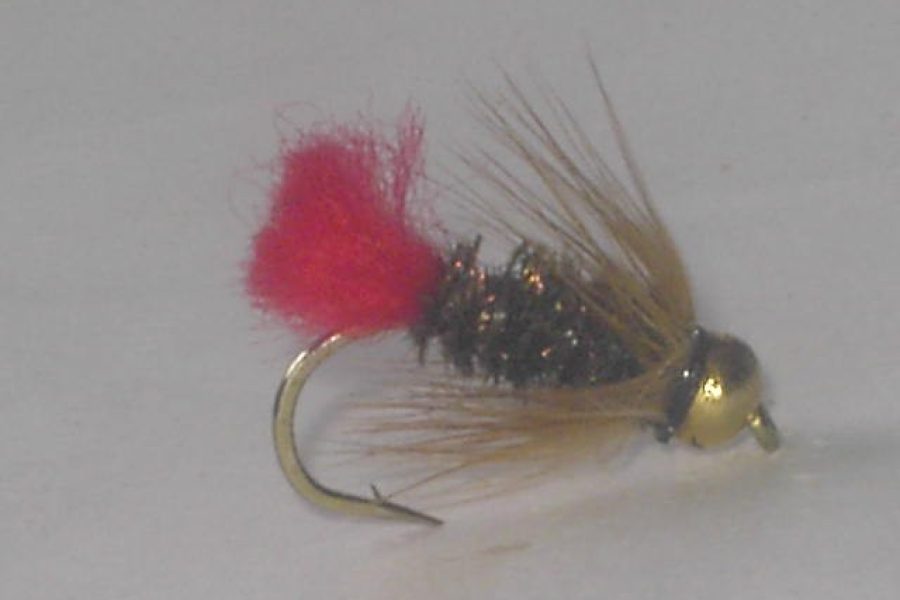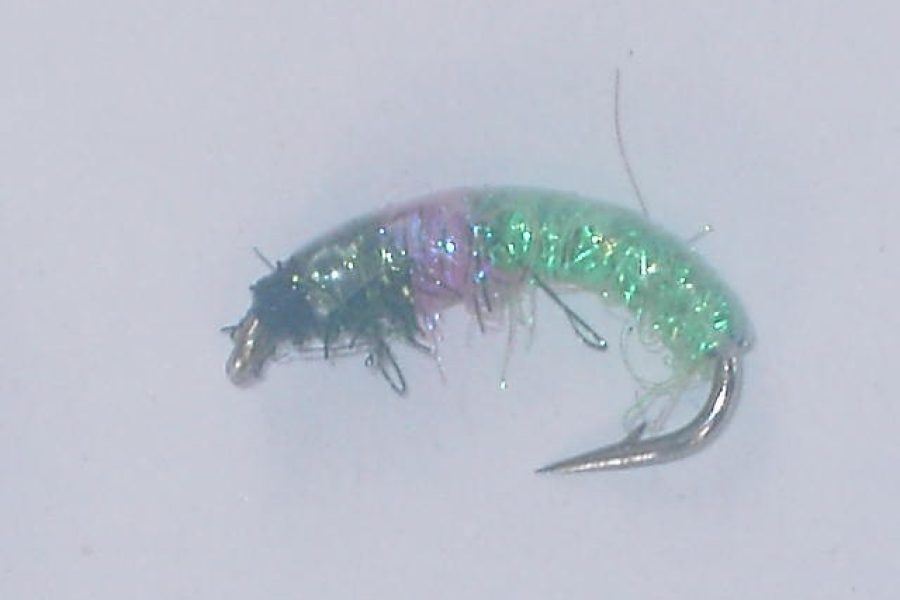Description
Historical Significance and Pattern Evolution The Olive Flash Perdigon Nymph represents a modern evolution in competitive fly fishing, emerging from the Spanish competitive fly fishing scene. This innovative pattern combines the fast-sinking characteristics of traditional Perdigon nymphs with subtle flash elements that trigger strikes from selective fish. Originally developed for European-style nymphing techniques, this pattern has gained worldwide recognition for its effectiveness in various fishing conditions and has been proven in world championship competitions.
Premium Materials and Construction Details Essential Materials List:
- Hook: Competition barbless jig hook (sizes 12-16)
- Bead: Tungsten (matched to hook size)
- Thread: Olive 8/0
- Tail: Coq de Leon fibers
- Body: Olive thread base with flash
- Rib: Small silver wire
- Coating: UV resin
- Flash: Pearl or olive Flashabou
- Optional: Lead underbody
- Wing Case: Black thread or holographic material
Material Selection Considerations:
- Hook strength matches fishing style
- Bead size affects sink rate
- Thread color creates base tone
- Tail material must be stiff
- Body materials minimize bulk
- Rib adds segmentation
- Coating creates smooth finish
- Flash amount affects visibility
- Weight distribution crucial
- Material preparation affects profile
Detailed Tying Instructions Preparation Steps:
- Select appropriate hook size
- Choose correct bead size
- Prepare tail fibers
- Cut flash materials
- Organize workspace
- Check tools
- Plan proportions
- Review pattern
- Test thread strength
- Prepare UV resin
Step-by-Step Tying Sequence:
- Add bead and lead
- Create thread base
- Tie in tail fibers
- Add wire rib
- Build smooth body
- Apply flash
- Counter-rib wire
- Form wing case
- Build small head
- Apply UV coating
- Cure thoroughly
- Check proportions
Advanced Fishing Techniques Presentation Methods:
- Euro nymphing
- Short-line nymphing
- Indicator nymphing
- Deep water tactics
- Fast water presentation
- Pocket water fishing
- Current seam fishing
- Structure approaches
- Pattern combinations
- Competition techniques
Water Reading Skills:
- Identify feeding lanes
- Recognize current breaks
- Spot productive runs
- Detect fish movement
- Read water clarity
- Locate prime lies
- Find transition zones
- Identify temperature breaks
- Track fish patterns
- Monitor conditions
Seasonal Strategies Spring Tactics:
- Target pre-spawn fish
- Focus on warming water
- Match natural nymphs
- Adjust depth
- Monitor temperatures
- Watch for activity
- Follow fish movement
- Time presentations
- Adapt to conditions
- Match natural drift
Summer Applications:
- Early morning fishing
- Late evening sessions
- Target deep runs
- Focus on fast water
- Match daily patterns
- Observe feeding windows
- Adjust to conditions
- Monitor water levels
- Watch temperatures
- Time presentations
Fall Approaches:
- Match seasonal changes
- Target feeding fish
- Adjust presentation depth
- Watch water conditions
- Monitor temperatures
- Follow movement patterns
- Adapt to weather
- Time efforts effectively
- Match natural drift
- Adjust techniques
Technical Rigging Considerations Leader Construction:
- Competition-style leaders
- Euro nymphing setups
- Proper diameter selection
- Breaking strength considerations
- Length adjustments
- Material choices
- Knot selection
- Sink rate control
- Visibility factors
- Setup variations
Terminal Tackle:
- Tippet ring connections
- Direct tie methods
- Leader construction
- Line control
- Strike detection
- Depth adjustment
- Pattern spacing
- Drift control
- Presentation angles
- Setup modifications
Habitat-Specific Tactics Water Types:
- Freestone streams
- Tailwaters
- Spring creeks
- Fast runs
- Deep pools
- Mixed waters
- Clear streams
- Pocket water
- Riffles
- Current seams
Specific Locations:
- Feeding lanes
- Current breaks
- Structure edges
- Deep holes
- Mid-stream
- Transitions
- Drop-offs
- Shallow flats
- Travel routes
- Holding lies
Advanced Presentation Methods Traditional Techniques:
- Tight-line nymphing
- French nymphing
- Spanish nymphing
- Czech nymphing
- Polish nymphing
- Short-line techniques
- Long-line approaches
- Indicator methods
- Deep presentation
- Speed control
Modern Adaptations:
- Competition methods
- Multiple fly rigs
- Contact nymphing
- Edge water tactics
- Structure approaches
- Pattern combinations
- Presentation modifications
- Depth control
- Speed variations
- Drift management
Pattern Variations Size Considerations:
- Match natural prey
- Consider water depth
- Adapt to pressure
- Account for clarity
- Follow seasonal trends
- Consider target species
- Match preferences
- Adapt to conditions
- Consider current
- Match forage base
Color Variations:
- Traditional olive
- Dark olive
- Light olive
- Black/olive
- Brown/olive
- Natural tones
- Flash levels
- UV enhancement
- Seasonal colors
- Water clarity match
The Olive Flash Perdigon Nymph represents the perfect fusion of competition design and practical effectiveness. Its carefully selected materials and precise construction ensure exceptional performance across various fishing conditions. Whether targeting selective trout in technical waters or searching for opportunistic feeders, this pattern provides the perfect tool for successful nymph fishing throughout the
Additional information
| Hook size | 10, 12, 14, 16, 18, 20 |
|---|---|
| Hook type | Barbed Hooks, Barbless Hooks |








